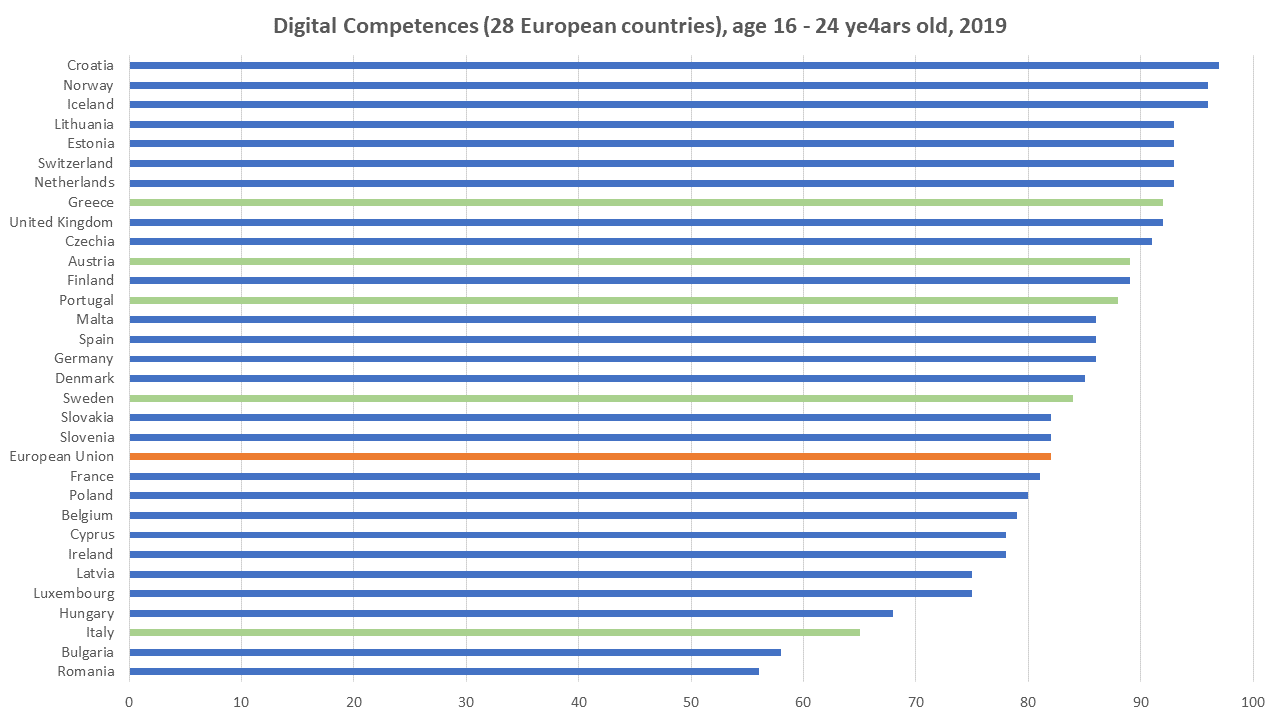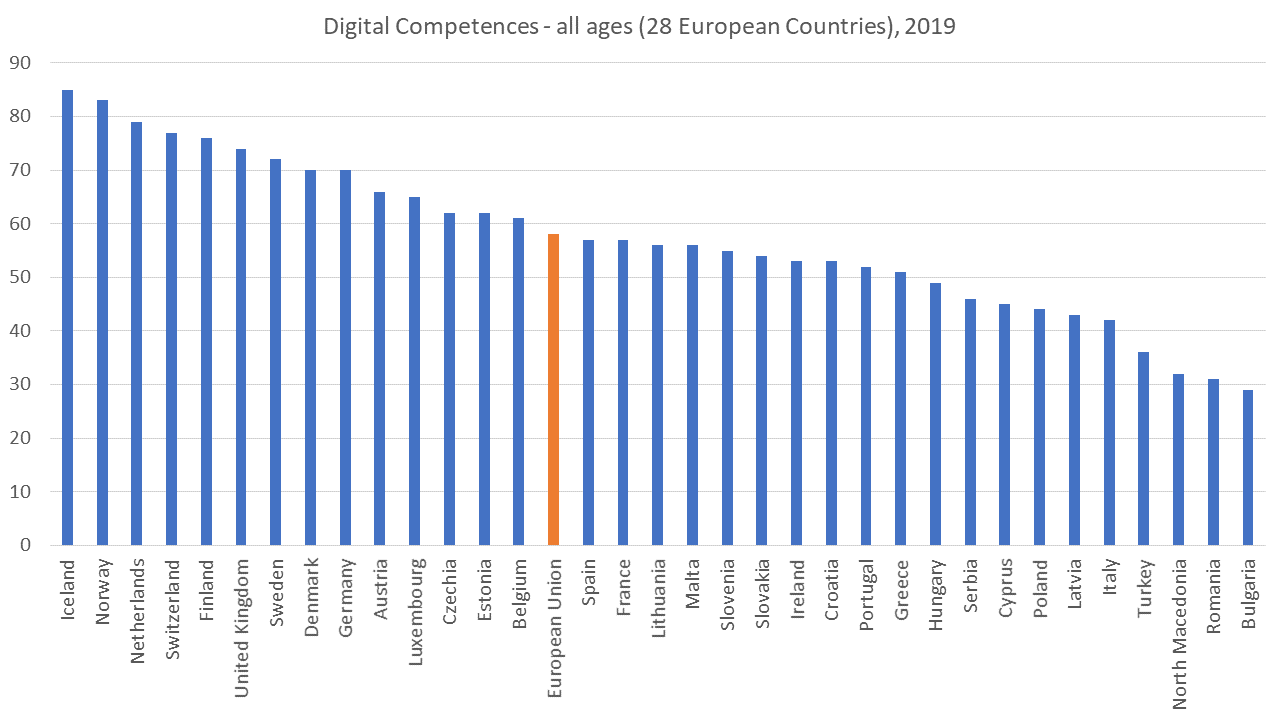Eurostat published a statistic about the digital skills of young people (aged between 16 and 24 years). The result – split to European countries – is interesting (In green color the partner contries of this project are marked):
The situation considering all ages is completely different. It is visible that young people have an enormous influence in the statistic.
The average in Europe is approximately 56 % – this means that 44 % of the European citizens lack digital competences.
It is important to understand the background of the term “Digital Competences” (or digital skills). Digital skills indicators are composite indicators which are based on selected activities related to internet or software use performed by individuals aged 16-74 in four specific areas (information, communication, problem solving, software skills). According to the variety or complexity of activities performed, two levels of skills (“basic” and “above basic”) are computed for each of the four dimensions.
Here is the list (Activities used for calculating the information skills):
Information skills
- Copied or moved files or folders;
- Saved files on Internet storage space;
- Obtained information from public authorities/services’ websites;
- Finding information about goods or services;
- Seeking health-related information.
Communication skills
- Sending/receiving emails;
- Participating in social networks;
- Telephoning/video calls over the internet;
- Uploading self-created content to any website to be shared.
Problem solving skills
- Transferring files between computers or other devices;
- Installing software and applications (apps);
- Changing settings of any software, including operational system or security programs.
Familiarity with online services
- Online purchases (in the last 12 months);
- Selling online;
- Used online learning resources;
- Internet banking.
Software skills (for content manipulation)
- Used word processing software;
- Used spreadsheet software;
- Used software to edit photos, video or audio files.
- Created presentation or document integrating text, pictures, tables or charts;
- Used advanced functions of spreadsheet to organise and analyse data (sorting, filtering, using formulas, creating charts);
- Have written a code in a programming language.
A detailed description is available from EuroStat


